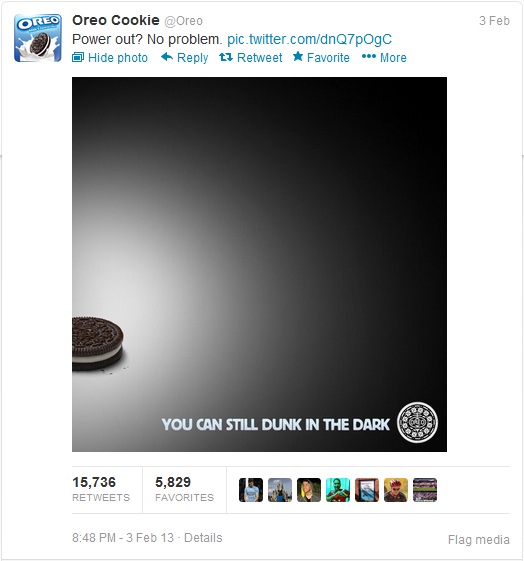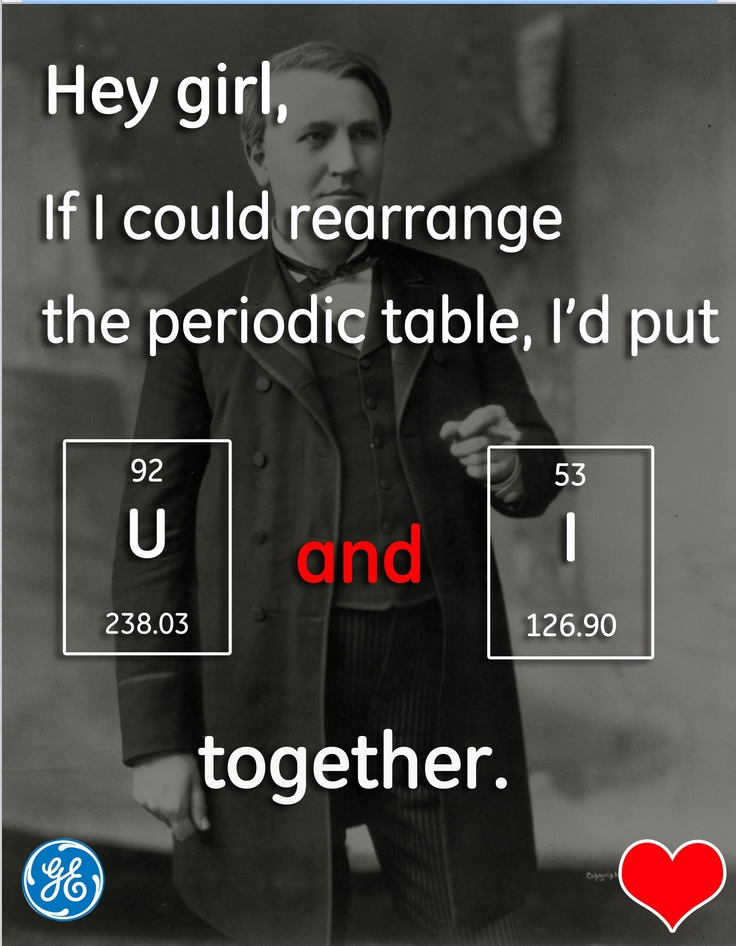Content Marketing
The Best Branded Content of 2013
This piece — just like every other Best Branded Content of 2013 piece you’ll read this year — is inherently flawed.
That’s because judging the best branded content from the outside is like choosing sports awards without advanced stats — or even some crucial basic ones. Views and shares are great, sure, but they’re heavily influenced by paid distribution. Not a whole lot else is publicly available. It’s not that these stats don’t exist; it’s just that the brands (and their agencies) are the only ones with clean access to them.
As a result, you’re left relying on the eye test and personal preferences — unless you look at what “best” means in a different way. To continue the sports analogy, I don’t root for brands to create great content because I’m concerned about the revenue numbers of Oreo or Red Bull or Chipotle. I root for them to create great content because I believe that the media world is a much better place when brands are telling great stories instead of shouting at people.
Plus, in the very near future, great storytelling is going to be one of the only ways for brands to reach consumers. We’re all better off if they start figuring it out now.
Great brand storytelling doesn’t just change consumers’ perception of a brand. It encourages and pushes other brands to tell great stories.
I compiled this list through that lens: What great pieces of branded content pushed the industry forward this year?
Oreo’s Super Bowl Tweet
Everyone knows all about Oreo’s Super Bowl Blackout tweet. Marketers couldn’t shut up about it all year, and without a doubt, the tweet’s impact on consumers was overblown. You also can’t deny that some brands took away the wrong lesson, trying (and failing) to hijack pop culture events left and right.
The tweet did, however, force a lot of brands to ask some key questions: How did Oreo get the ad created, approved and published so fast? Why can’t we do that? How do we do that?
Since then, there’s been a lot of attention cast upon the rapid-response newsroom Oreo set up and how brands can replicate it.
The “brand newsroom” is now part of the marketing lexicon. That’s absolutely crucial as brands try to transform into media companies. Cheers to the cookie for making that so apparent.
Dove Real Beauty Sketches
https://www.youtube.com/watch?v=XpaOjMXyJGk
What more is there to say about the most-watched brand video ever? Leaving Real Beauty Sketches off this list would be like leaving Peyton Manning off your Pro Bowl ballet. Four things in particular stand out about this great piece of content:
1) It shows how much owning a conversation can pay off. Dove has been creating awesome content about embracing real beauty for a decade now, and that allowed them to pull this off. From some other brands, it would have come across as contrived.
2) When Oglivy pitched this concept to Dove, they had no idea what would happen. Neither did Dove. Everyone took a leap of faith and embraced the unknown; that’s a really hard thing for brands to do, but it’s going to become increasingly necessary.
3) As the video went viral across the globe, Dove had several different agencies working together in one command center, creating hundreds of pieces of supplementary content and releasing them out to the world. Now that’s a brand newsroom.
4) With 5.6 billion global media impressions, Dove Real Beauty Sketches officially shut up anyone who says that brand storytelling can’t scale.
Chipotle’s “The Scarecrow”
We covered why we love Chipotle’s latest short film, The Scarecrow, earlier this year: It resonates emotionally, connects with Chipotle’s core values, and continues the story it started telling with its first hit video, “Back to the Start.” Better yet, it makes you care about sustainability issues, and supports Chipotle’s unique place in the market as the first American restaurant chain to ban genetically modified foods.
Those are all enough reasons for it to make this list, but the film is particularly notable for the way that it connects to a larger content ecosystem. The film is actually promoting a free iOS game called The Scarecrow, in which players can fight against unethical food practices. And it serves as the opening act to the main event: A series of four, TV show-length Big-Food-busting dark comedies, “Farmed and Dangerous“, that Chipotle will post online sometime in 2014. It’s the kind of multi-faceted content play that brands should be examining closely.
Pantagonia’s Anti-Consumerism Black Friday Film
In this space, we talk a lot about the importance of putting brand promotion aside and telling great stories about the things your brand cares about. Pantagonia’s wonderful 27-minute, anti-consumerism short film, “Worn Wear” shows what can happen when brands take that message to heart.
Here’s how we described it:
“The cinematography, which includes sweeping footage from Baja beaches to Alpine cliffs, is stunning, and the stories told in the film are truly compelling,” wrote The Content Strategist’s Natalie Burg. “Longtime adventurers — including surfers, cyclists, organic farmers and maple syrup makers — tell of their decades-long relationships with their favorite piece of Patagonia gear, many of which are taped and frayed from use. Some were even bought at garage sales or were given away for free to begin with.”
Pantagonia practically begged their shoppers not to buy their stuff, going as far as to invite people to bring in their old Pantagonia to get it patched up for free. But it had the opposite effect, creating brand loyalists who will buy their gear for years to come. Thinking about sales is branded content’s poison apple; Pantagonia won by throwing it aside.
Pepsi/Chevy’s Jeff Gordon “Test Drive” Prank
Pepsi’s brand publishing efforts have been hit and miss. It’s much-touted Pepsi Pulse site, for instance, has been a dud. But they’ve found a real sweet-spot with prank videos. The three-part “Uncle Drew” series has garnered almost 50 million views on YouTube, and their Jeff Gordon prank video has attracted over 40 million hits.
In the hilarious and awesome video, Gordon dons a disguise and takes an unwitting car salesman on a wild test drive in a Chevy Camaro, scaring the hell out of him. The video quickly went viral, and discussion over whether or not the stunt was staged generated even more buzz. It serves as a great example of what can happen when two brands work together, and what happens when a brand hones in on a micro-content strategy and “totally crushes it,” as my New Jersey bros like to say. Look for way more of both in 2014.
Red Bull’s Harlem Shake (Skydive Edition)
It was a rough year for brands trying to hijack memes, but not for Red Bull. The platinum standard in brand publishing, Red Bull showed marketers across the globe how it’s done, taking the Harlem Shake meme to new heights and extremes of awesomeness. It also sent a message: Brands can meme-jack. They just need to do it way better than everyone else.
GE’s Everything
GE just gets it, and shows that you don’t need to be super-hip adrenaline junkies like Red Bull to be a brand-publishing powerhouse. Their tech blog, Txchnologist, is nerd nirvana. Their “Hey Girl” Thomas Edison pins, seen above, display a rare mastery of social media content. So does their Tumblr. And GE Reports is a case study in how brands should talk about themselves. They’re firing on all cylinders. (No pun intended.)
Burt’s Bees Six-Second Classics
We agree with Gary Vaynerchuck: brands need to tell stories native to social platforms, instead of just looking at them as mere distribution channels. They also need to tell great stories, even within the harsh restrictions of platforms like Vine.
Burt’s Bees did that masterfully, adapting classics like like The Scarlet Letter, Gulliver’s Travels, Moby Dick, The Legend of Sleepy Hollow, and The Metamorphosis to Vine using stop motion animation. Who knew that a tube of lip balm could portray Hester Prynne so masterfully?
Rapha’s Gentlemen’s Race
Rapha has perfected the short branded documentary. Gentlemen’s Race isn’t the only four-minute film the cycling retailer made in 2013. It’s merely the best of a fantastic bunch.
This is far from the exhaustive list; brands made a lot of cool stuff this year. But these pieces are bound to inspire even better stories in 2014, and that’s good news for everyone.
Want your business to tell great stories like this one? Contently gives brands the tools and talent to tell stories that people love. Learn more.
NOTE: PepsiCo is a current client of Contently. Though the content featured above was produced separately.
Image by mamojo/ Flickr.comGet better at your job right now.
Read our monthly newsletter to master content marketing. It’s made for marketers, creators, and everyone in between.






